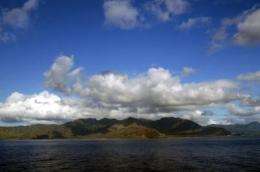Documented decrease in frequency of Hawaii's northeast trade winds

Scientists at University of Hawaii at Manoa (UHM) have observed a decrease in the frequency of northeast trade winds and an increase in eastern trade winds over the past nearly four decades, according to a recent study published in the Journal of Geophysical Research. For example, northeast trade wind days, which occurred 291 days per year 37 years ago at the Honolulu International Airport, now only occur 210 days per year.
Jessica Garza, a Meteorology Graduate Assistant at the School of Ocean and Earth Science and Technology (SOEST) at UHM; Pao-Shin Chu, Meteorology Professor and Head of the Hawaii State Climate Office; Chase Norton; and Thomas Schroeder analyzed 37 years of wind speed and direction, and sea level pressure data from land-based weather stations, buoys and reanalysis data.
Persistent northeast trade winds are important to the Hawaiian Islands because they affect wave height, cloud formation, and precipitation over specific areas of the region. When trades fail to develop the air can become dormant and unpleasant weather can develop.
Furthermore, Chu explained that the trades are the primary source of moisture for rain, and that a dramatic reduction could fundamentally change Hawai'i's overall climate.
"We have seen more frequent drought in the Hawaiian Islands over the last 30 years," he noted. "Precipitation associated with the moisture-laden northeasterly trades along the windward slopes of the islands contributes much of the overall rainfall in Hawaii."
According to the National Drought Mitigation Center's State Drought Monitor, nearly 50% of land in Hawaii has experienced some degree of drought during the past year.
While previous research has focused primarily on changes in trade wind intensities, this work, along with Chu's 2010 study, is among the first to show changes in trade wind frequencies.
"In 2010, we only studied the trade wind changes at four major airports in Hawaii (Honolulu, Kahului, Hilo, and Lihue). In the current paper, we expanded our study to include four ocean buoys in the vicinity of Hawaii and a large portion of the North Pacific," Chu commented.
In the future, these scientists will be using model simulated data to further understand the dynamics of rainfall and trade winds, and estimate future patterns.
More information: Garza, Chu, Norton, and Schroeder (2012), Changes to the prevailing trade winds over the islands of Hawaii and the North Pacific, Journal of Geophysical Research, 117, D11109, doi:10.1029/2011JD016888
Journal information: Journal of Geophysical Research
Provided by University of Hawaii at Manoa



















